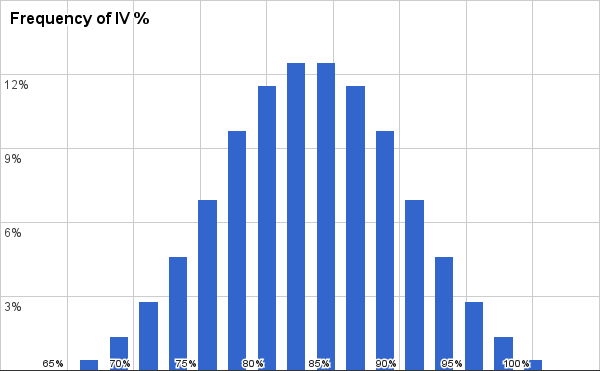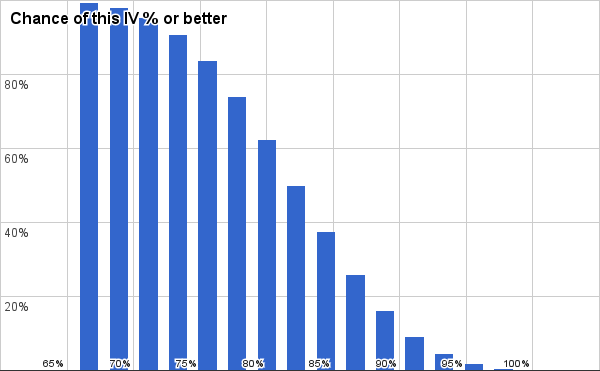It’s very well-known by now that Pokemon hatched from eggs tend to have higher IV distributions than Pokemon caught in the wild (especially after the wild Pokemon IV glitch was fixed). The last formal study on this subject was conducted 3 months ago by /u/CrabHelmed and arrived at an interesting conclusion:
Essentially, a caught Pokemon (barring the ATK IV glitch) rolls a "dice" of sorts, between 0 and 15, and that's the IV. However, egg Pokemon do it slightly differently. For each IV, they roll the dice 3 times, and take the highest.
However, I found this conclusion to be suspicious, because in the 50+ eggs that I had hatched at the time, none of them had an IV <10 in any stat. The chance of that happening under this IV paradigm is vanishingly low. So I, with contributions from /u/homu, undertook the task of recording our egg hatch IVs for over 2 months.
Over these 2+ months, for every Pokemon hatched from an egg, /u/homu and I checked its exact IVs using a TOS-breaking IV checker app. u/homu used PGNexus for this and I used GoStats for Android. We decided to use a TOS-breaking method because that would yield exact results, thereby excluding a potential source of error in calculating IVs using Pokemon level, HP, and CP (it also saved us a lot of stardust).
There were also random reports of Pokemon not hatching from their appropriate egg class (i.e., 5 km Pokemon hatching from 10 km eggs) and Pokemon hatching at a level >20. So for each hatch, we also recorded the egg’s respective distance and the resulting Pokemon’s starting level.
For the IV distribution analysis, we assumed a null hypothesis that the egg hatch IV distribution was uniform across the range [10, 15]. We then performed a chi-squared analysis comparing the observed IV distribution against the expected IV distribution if the expectation were uniform.
We recorded 418 hatches in total between 8/23/16 and 11/2/16. Here’s a quick summary of the data:
We expected each IV value over the range [10, 15] to have 209 occurrences over the entirety of the data set. Although IV = 14 had more occurrences than any other value, the chi-square analysis failed to indicate that this was a statistically significant deviation from a uniform distribution.
None of the 418 hatches had an IV <10. The likelihood of this occurring under u/CrabHelmed's paradigm is astronomically small.
All 418 hatched Pokemon correctly belonged to their distance class, and no hatched Pokemon had a level >20 (u/homu and I were both beyond trainer level 20 when this study began).
I can confidently state that u/CrabHelmed’s study has been obsoleted by this one. We failed to reject the null hypothesis that IV distribution of hatched Pokemon is over the range [10, 15] and our observations were entirely inconsistent with his proposed paradigm. Though we cannot prove for certain that our hypothesis is true, we do not think of any other hypothesis that is both parsimonious and fits the data.
Additionally, none of the 418 hatches violated the rules of egg distance or a max hatch level of 20. Take note that all data points were obtained before Eevee was converted into a 5 km hatch.
So what possibly accounts for the error that influenced u/CrabHelmed’s hypothesis? He hatched a larger data set (1000 eggs) through botting, so his study was airtight, right? Well, his study did not describe its methodology, so we don’t know for now how he observed the hatched Pokemon’s IVs.
Although the dataset is insufficiently large to confirm definitively, we saw no specific pattern that points toward the individual stamina, attack, and defense IVs correlated with each other in any way:
Assuming uniform individual IV distribution:
- The probability of at least a strong overall appraisal (66% IV or better) is 100%.
- The probability of the best overall appraisal (82.2% IV or better) is 62.5%.
- The probability of getting at least 1 stat with a 15 IV is 42%.
- The probability of a perfect hatch is 0.46%.
How overall IV % is distributed for hatched Pokemon:


| IV Total | IV % | Frequency | Chance of this or better |
|---|---|---|---|
| 30 | 66.7% | 0.5% | 100.0% |
| 31 | 68.9% | 1.4% | 99.5% |
| 32 | 71.1% | 2.8% | 98.1% |
| 33 | 73.3% | 4.6% | 95.4% |
| 34 | 75.6% | 6.9% | 90.7% |
| 35 | 77.8% | 9.7% | 83.8% |
| 36 | 80.0% | 11.6% | 74.1% |
| 37 | 82.2% | 12.5% | 62.5% |
| 38 | 84.4% | 12.5% | 50.0% |
| 39 | 86.7% | 11.6% | 37.5% |
| 40 | 88.9% | 9.7% | 25.9% |
| 41 | 91.1% | 6.9% | 16.2% |
| 42 | 93.3% | 4.6% | 9.3% |
| 43 | 95.6% | 2.8% | 4.6% |
| 44 | 97.8% | 1.4% | 1.9% |
| 45 | 100.0% | 0.5% | 0.5% |










